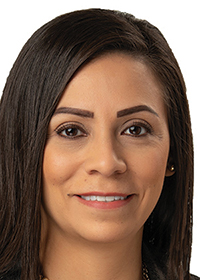Portfolio diversification is key to retirement nest egg
by October 22, 2023 10:30 am 677 views

Every day in the United States, 10,000 people turn age 65, according to the U.S. Department of Health and Human Services. Census data indicates that in 2024, there will be more 65-year-olds in this country than at any other time in history when about 12,000 people will be turning 65 each day. That means retirement planning is a topic on the minds of many.
When discussing retirement planning, it must be noted that approximately 58 million Americans (a third of the working-age population) have no retirement savings at all, according to Benefits Pro. For many others, their only retirement planning is the 401(k) offered through their employer, possibly at the lowest contribution level available, while others continue to rely on the now outdated 60/40 model of having 60% invested in stocks and 40% invested in bonds.
If a person had just a 401(k), stocks and bonds, that person would have a minimally diversified portfolio. However, with Americans living longer, further diversification will be critical if that person wants a nest egg braced to weather price swings that can devalue investments, putting them at risk of outliving their money.
To have a truly diverse portfolio, you need products from each of four asset classes:
- Cash and cash equivalents: These are low-risk, highly liquid assets like certificates of deposit (CDs), money market accounts or short-term treasury bills.
- Equities (stocks): These offer growth potential but are subject to higher volatility.
- Fixed-income (bonds): These provide more stability and income but generally have lower growth potential.
- Real assets (real estate, commodities): These can act as hedges against inflation.
Two underutilized investment vehicles are CDs and money market accounts, but many retirement-age people have real estate assets they should factor into their planning.
While we’re seeing interest rates in the 5.25% to 5.5% range — the highest in about 22 years, after the Fed raised rates 11 times since March 2022 to control inflation — those high rates correlate to high annual percentage yield (APY) for CDs and money markets.

CDs pay a fixed interest rate over a period of time, which differs from the variable rates of money markets that fluctuate under the Fed rate. Locking in a CD in the 4% to 5% range can be a great option if you are not concerned about having access to the money before the maturity date without early withdrawal fees.
A professional adviser will help you find the right CD account that suits you and your financial needs, taking into account another advantage of CDs: their flexibility. Investors can choose CDs with various maturity periods, ranging from a few months to several years. That allows you to tailor your CD investments to your financial goals and liquidity needs. Short-term CDs provide quick access to funds, while longer-term CDs can offer higher interest rates. A CD that doesn’t have an early withdrawal penalty can also be helpful in cases where emergency cash is needed. This versatility enables you to use CDs strategically in your portfolio. Additionally, CDs typically have a low correlation with stocks, so when stocks and bonds perform poorly, CDs can stabilize, preserving capital and ensuring you don’t lose everything during a market downturn.
Today, it’s easy to find a money market with an APY in the 4-5% range – much higher than traditional savings accounts, averaging less than 1%. Another great thing about money markets is that they can keep assets liquid. As with CDs, an adviser will help you find the best fit for your unique financial situation.
Whether it’s today’s high-interest-rate environment or turbulent times down the road, a trusted adviser can help find the right mix of products to add financial longevity to match your life in retirement.
Maria Obispo is a client adviser with Arvest Wealth Management. The opinions expressed are those of the author.
